
Shrubs Around Las Vegas, Vegetation Around Las Vegas
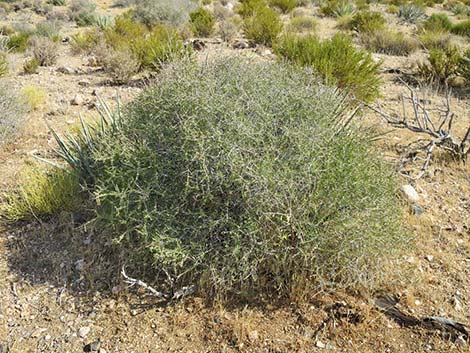 Leafless plant during winter; twigs widely diverging |
General: Desert Almond (Prunus fasciculata) are robust, twiggy shrubs almost always found along washes. The species is deciduous, but even without leaves, this twiggy shrub with angular joints, spiny tips, and branches with leaf fascicules, is recognizable. The leaves are narrow, about 1/3- to 1/2-inches long, and grouped in clusters on the tips very short lateral branchlets. The lateral branchlets, appearing like bumps on the side of a branch, are referred to as fascicules, and the leaves are said to be fasciculated [fascicule = a bundle of structures]. Desert Almond is a common component of wash communities in the Upper Sonoran (Mojave Desert Scrub and Pinyon-Juniper Woodland) life zones. Family: Rose (Rosaceae). Other Names: Desert Peach |
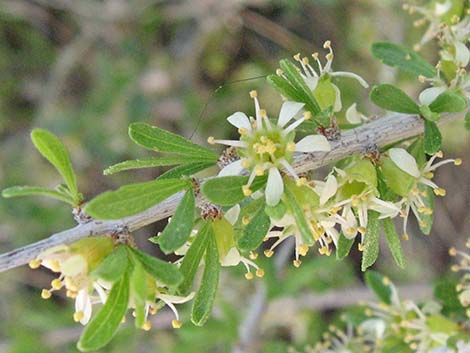 |
Plant Form: A widely branched shrub growing in clumps and thickets along the rocky washes. Height: Usually grows 3-5 feet tall (to 6 feet). Bark: Gray Stems: Many branches; short and rigid, occurring at widely diverging angles, with a spiny tip. Leaves: Narrow (1-3 mm wide), 1/3 to 1/2 inch long, and entire; grouped in clusters on short lateral branchlets (i.e., fasciculated). Flowers: Flowers during spring. Flowers are small, white to yellowish; grow from leaf axils. |
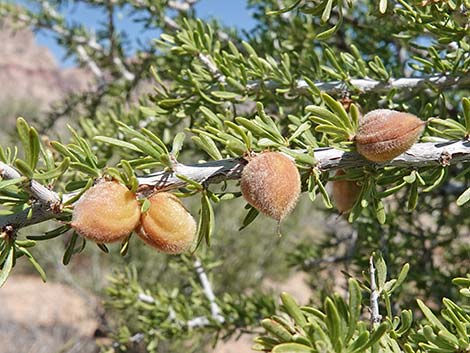 Ripe fruits |
Fruit and Seeds: Fruit resembles a small, fuzzy peach; about 1/2 inch long; covered with dense, brown hairs. Seed surrounded by a thin, dry pulp. Habitat: Dry, well-drained sandy, gravelly, and rocky soils along washes; occasionally found away from washes on rocky hillsides. Elevation: Generally 3,000 to 6,500. Distribution: Utah to Baja California Comments: This is one of the species most often seen along washes around Las Vegas. Western Tent Caterpillar Moths (Malacosoma californicum fragile) usually lay their eggs in Desert Almonds. The eggs hatch, and the caterpillars build a "tent" for protection while they feed on leaves. When present, this is a good way to identify this plant species in our area. |
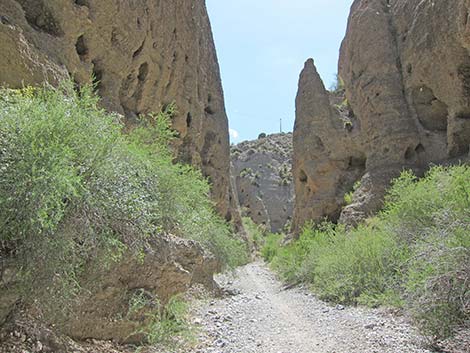 |
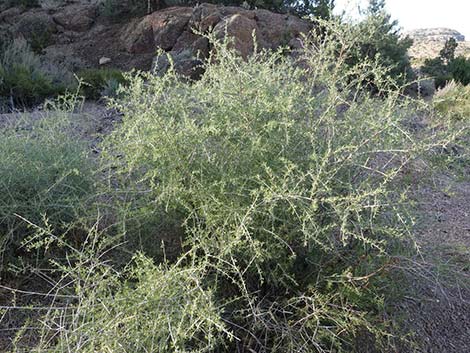 |
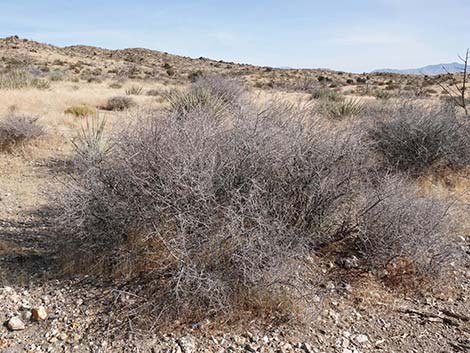 Desert Almond during winter |
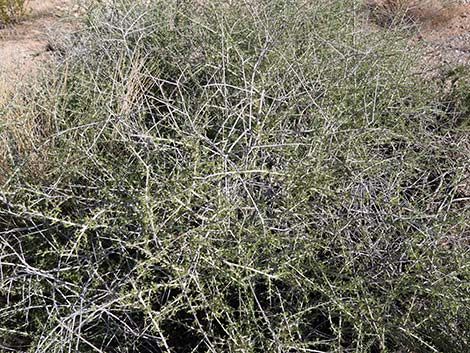 Angular nature of the stems is apparent |
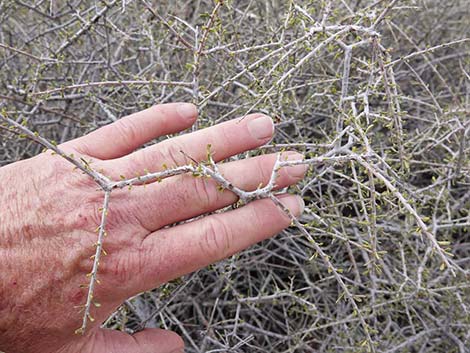 Without leaves, the angular nature of the stems is apparent |
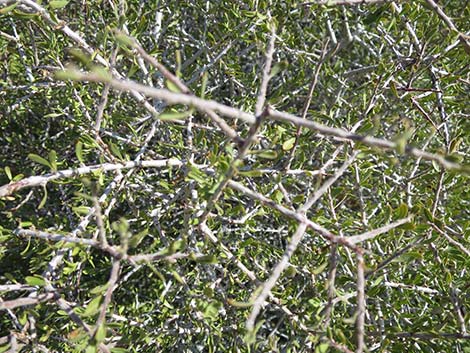 Angular nature of the stems is apparent |
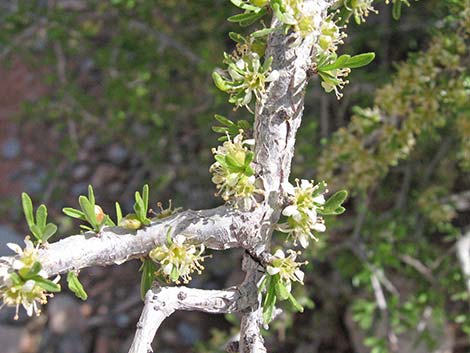 Angular nature of the stems is apparent |
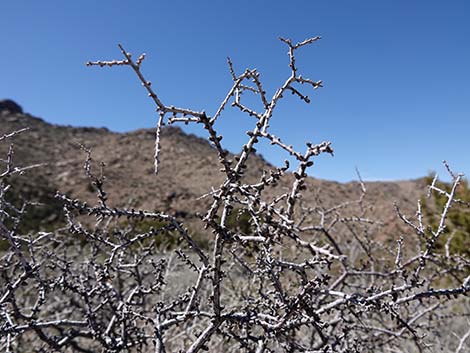 Angular nature of the stems is apparent |
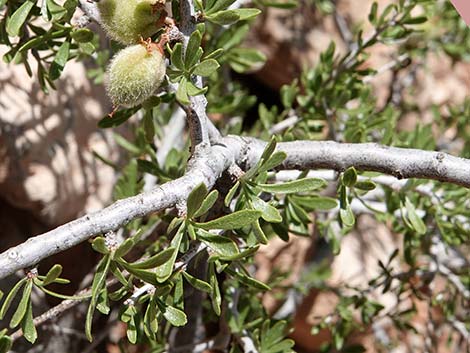 Bark is gray |
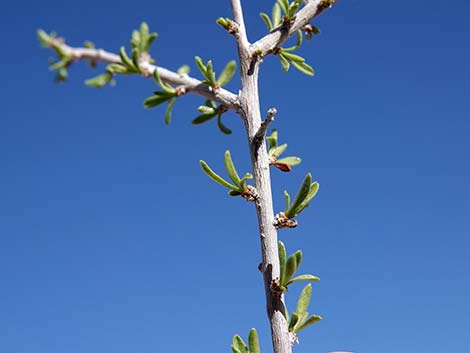 Bark is gray |
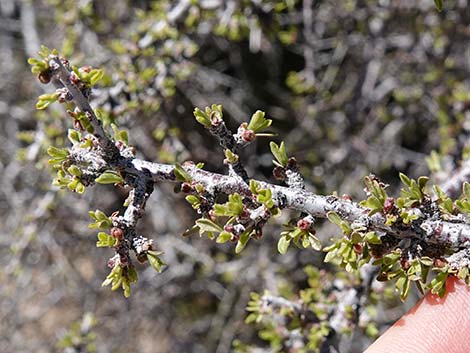 Fasciculated leaves |
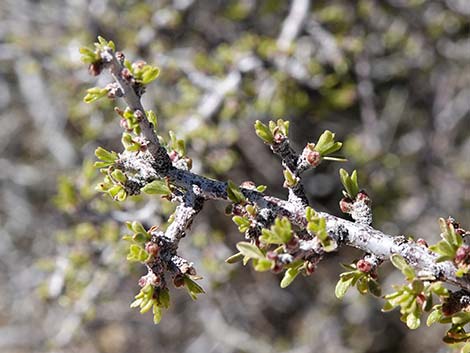 Fasciculated leaves |
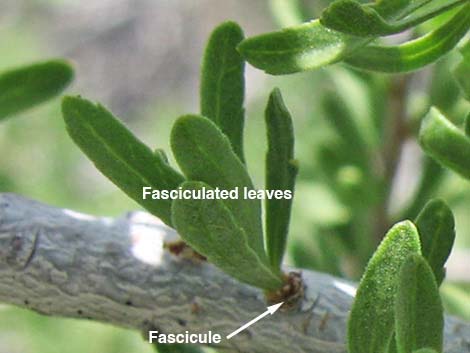 Fasciculated leaves |
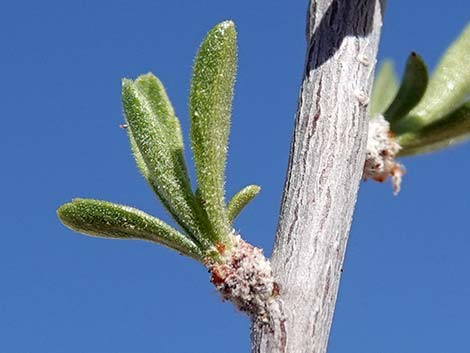 Fasciculated leaves |
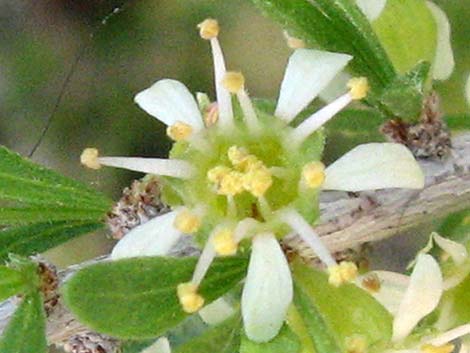 |
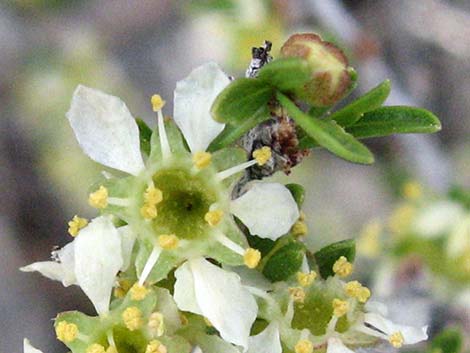 |
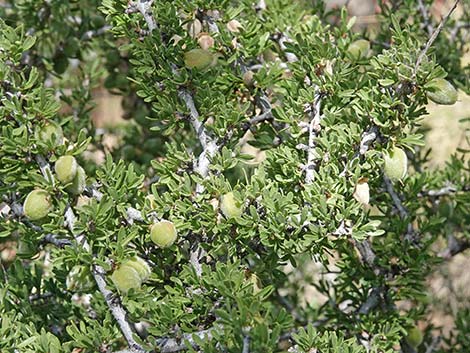 Developing fruits |
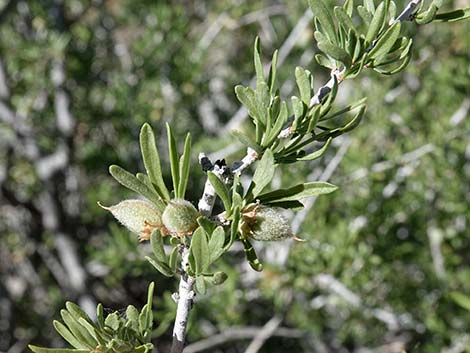 Developing fruits |
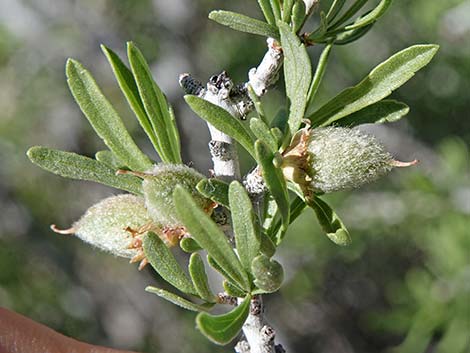 Developing fruits |
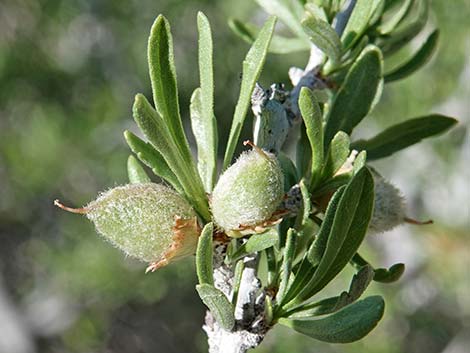 Developing fruits |
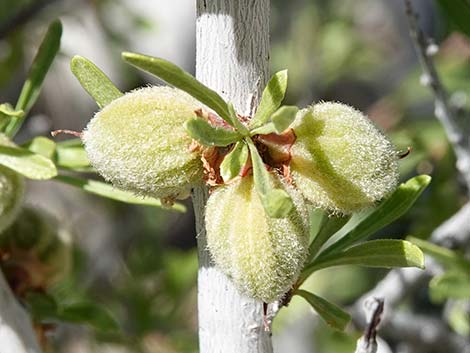 |
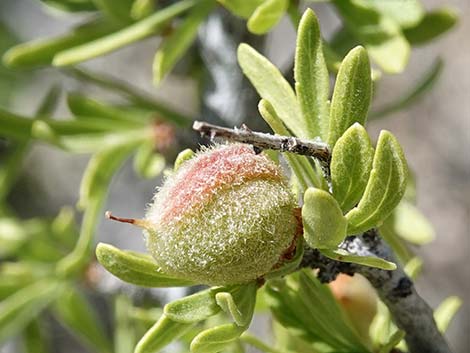 |
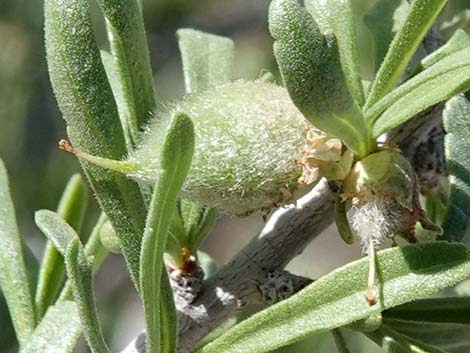 Developing fruits |
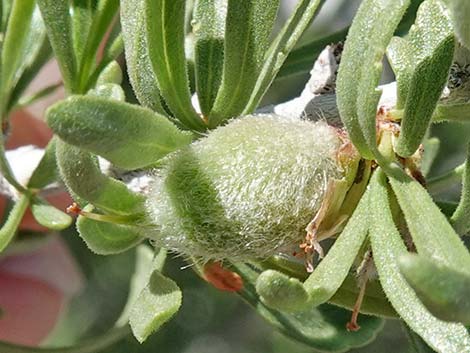 Developing fruits |
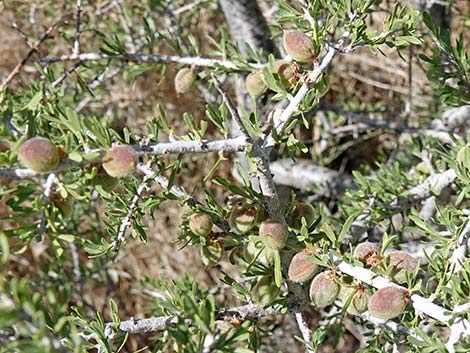 |
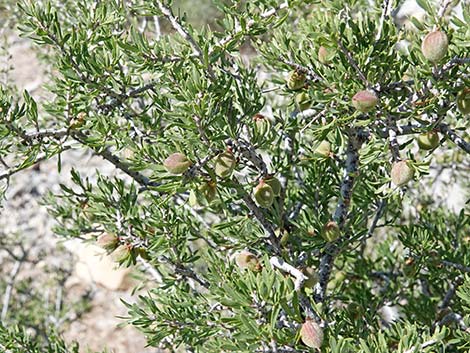 |
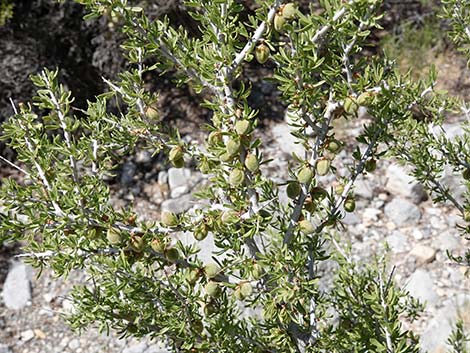 |
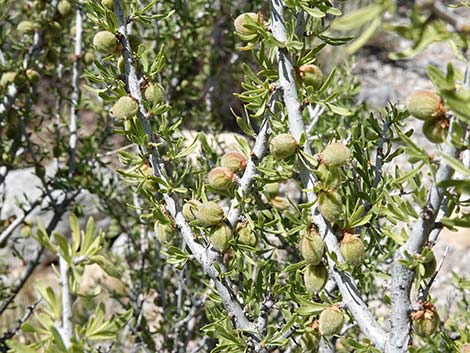 |
 Ripe fruits |
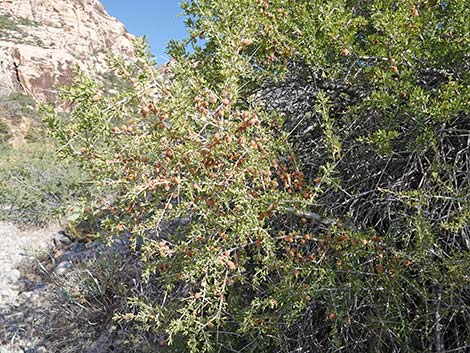 Shrub heavily laden with ripe fruits |
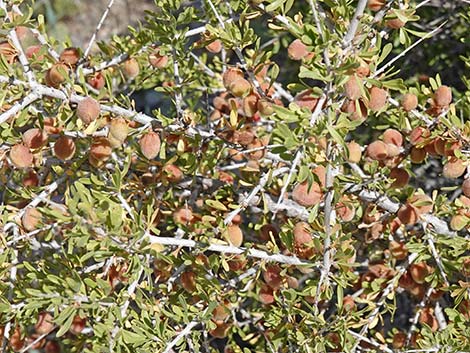 Shrub heavily laden with ripe fruits |
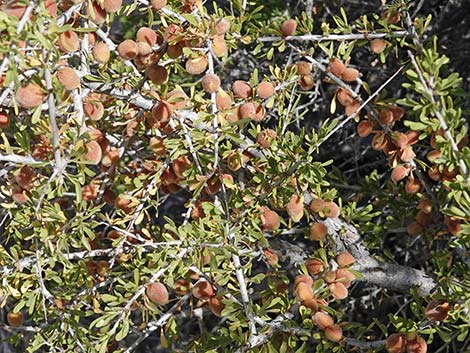 Shrub heavily laden with ripe fruits |
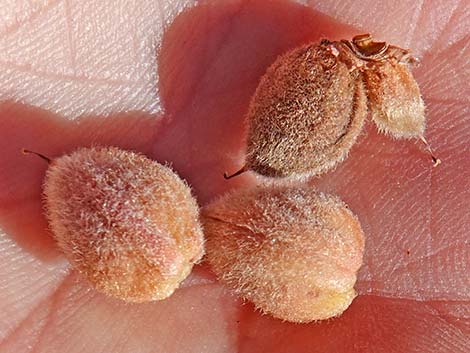 Ripe fruits |
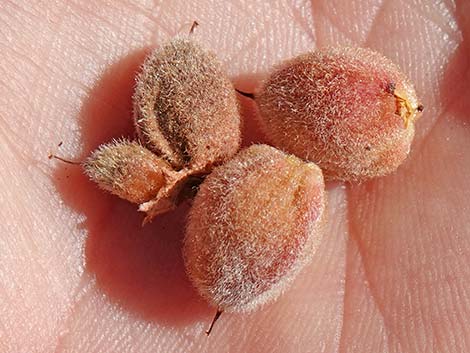 Ripe fruits |
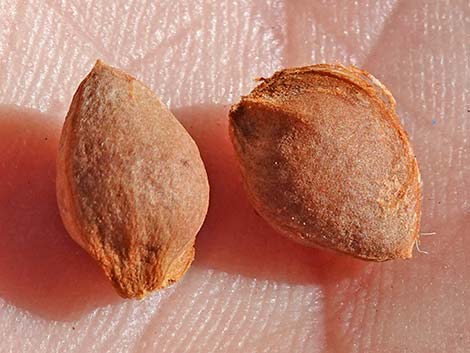 Ripe fruits |
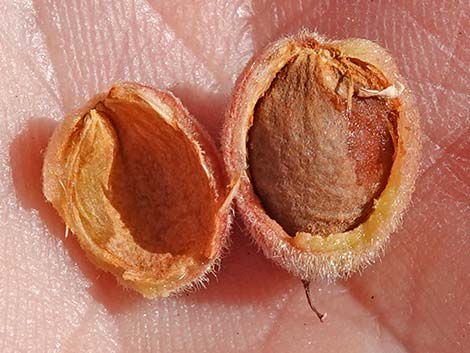 Ripe fruit open (the nut was tasty) |
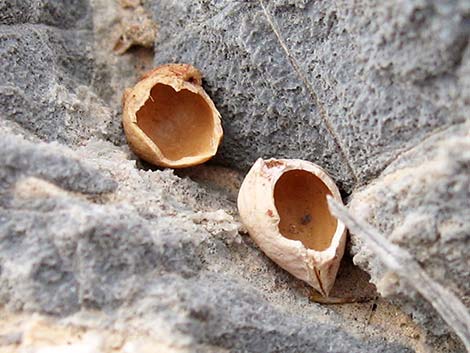 Seeds eaten by rodents |
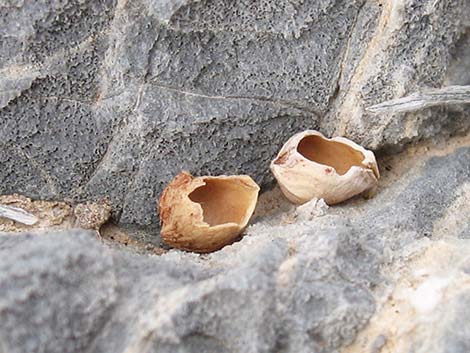 Seeds eaten by rodents |
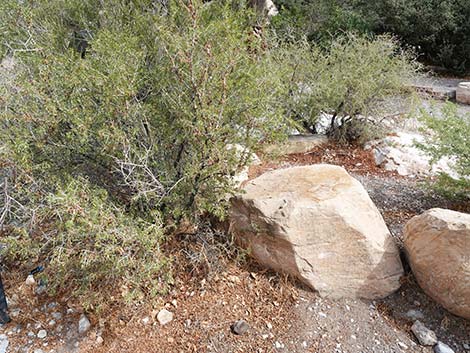 In some year, Desert Almonds put on an extraordinary number of fruits |
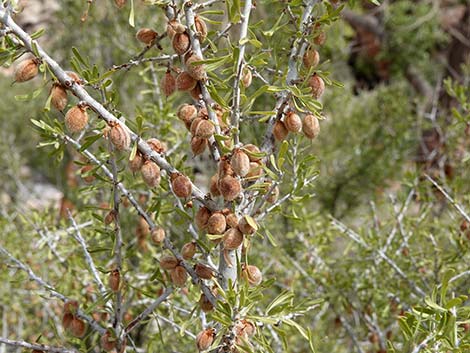 In some year, Desert Almonds put on an extraordinary number of fruits |
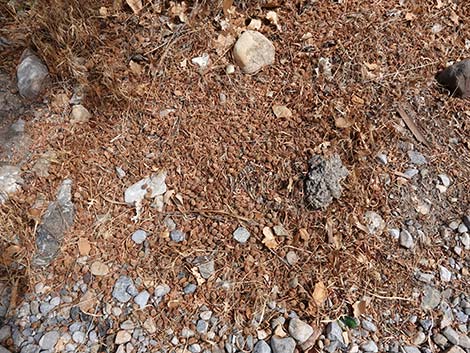 Extraordinary number of Desert Almond fruits on the ground |
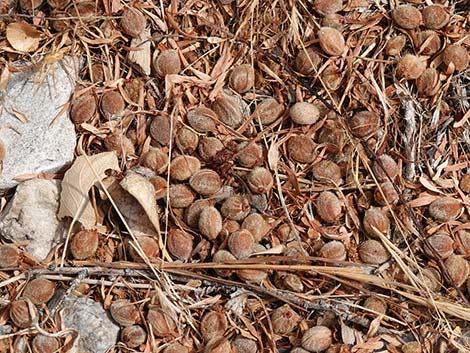 Extraordinary number of Desert Almond fruits on the ground |
Western Tent Caterpillar Moths usually lay their eggs in Desert Almonds. The eggs hatch, and the caterpillars build a "tent" for protection while they feed on leaves.
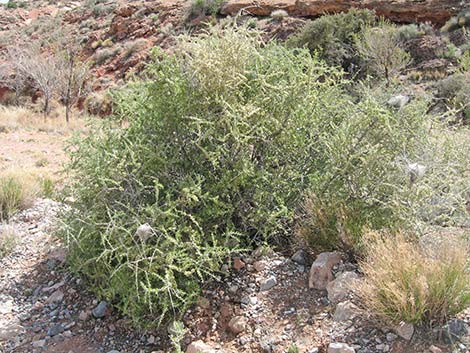 Desert Almond along a desert wash with tent caterpillar nests |
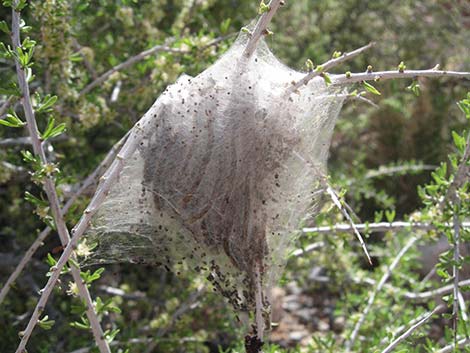 Western Tent Caterpillar Moths (Malacosoma californicum fragile) |
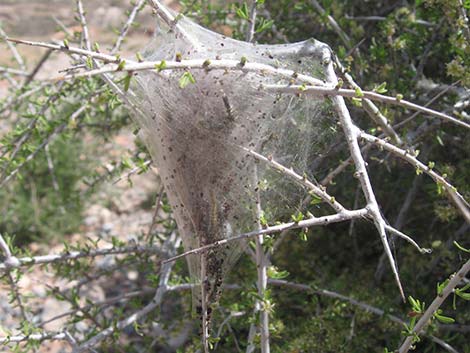 Western Tent Caterpillar Moths (Malacosoma californicum fragile) |
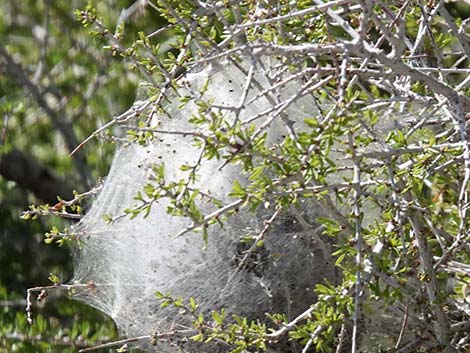 Western Tent Caterpillar Moths (Malacosoma californicum fragile) |
Note: All distances, elevations, and other facts are approximate. Names generally follow the USDA database.
![]() ; Last updated 220815
; Last updated 220815
| All Shrubs | Plant Species Index | Glossary | Copyright, Conditions, Disclaimer | Home |